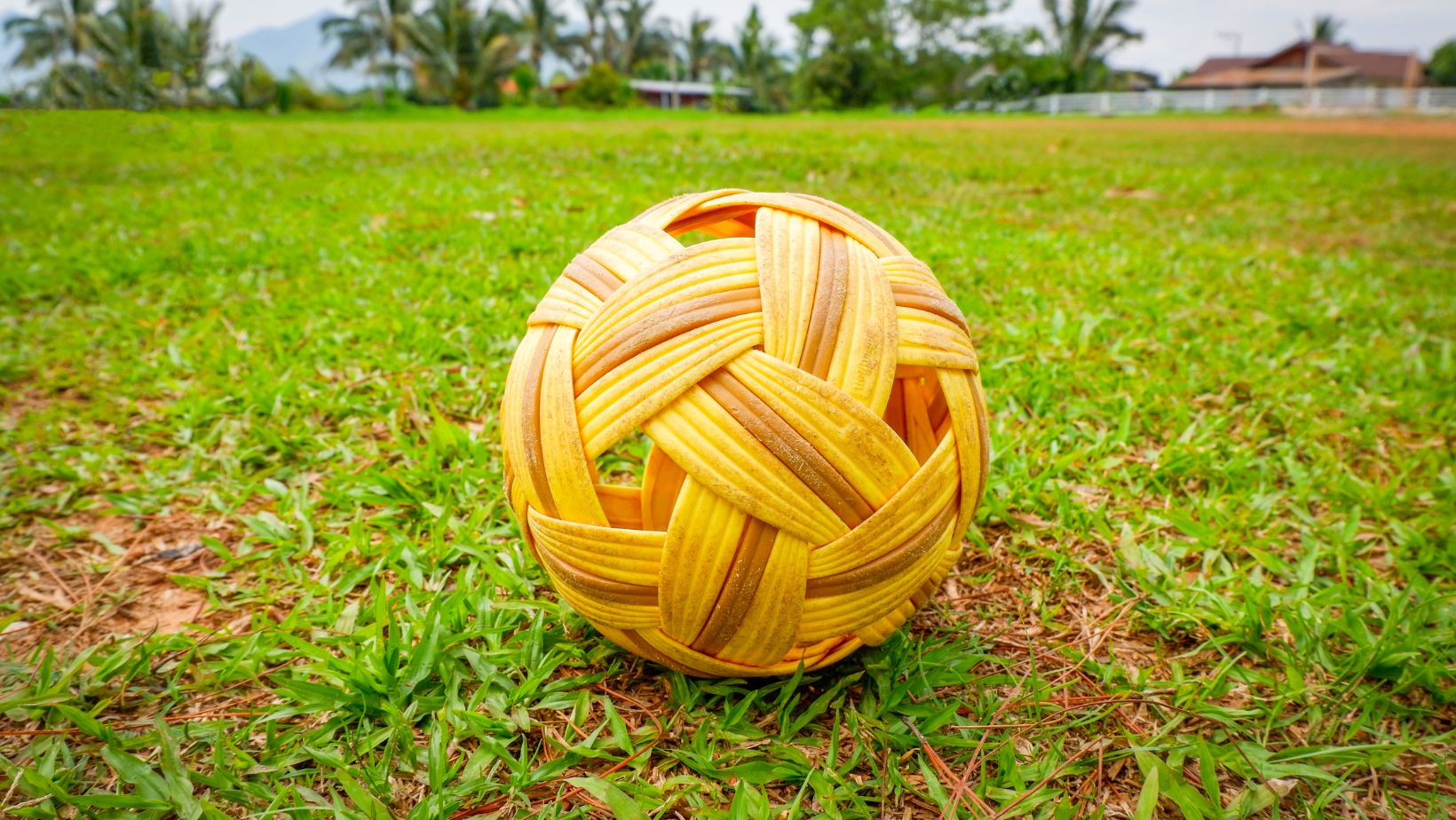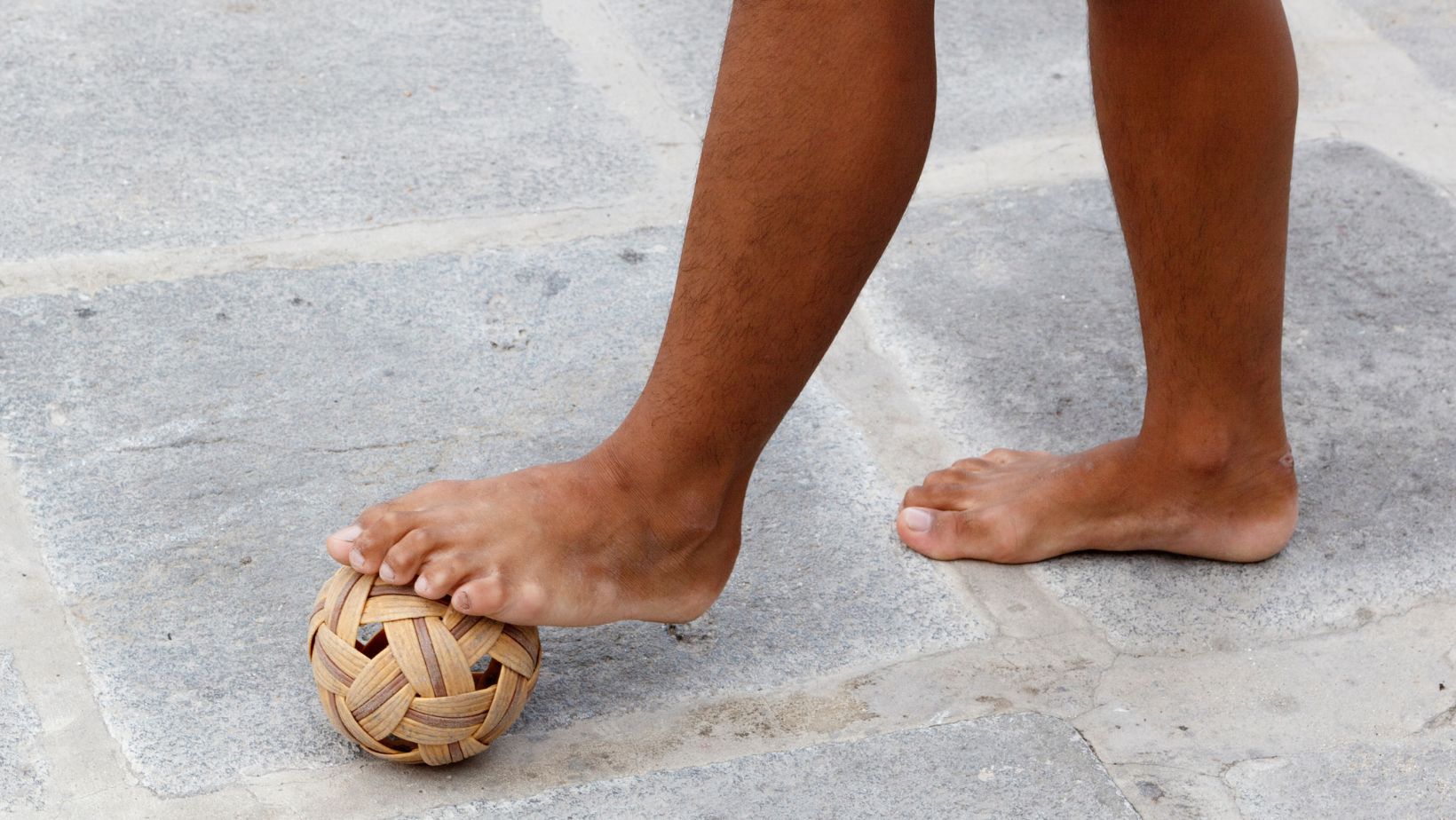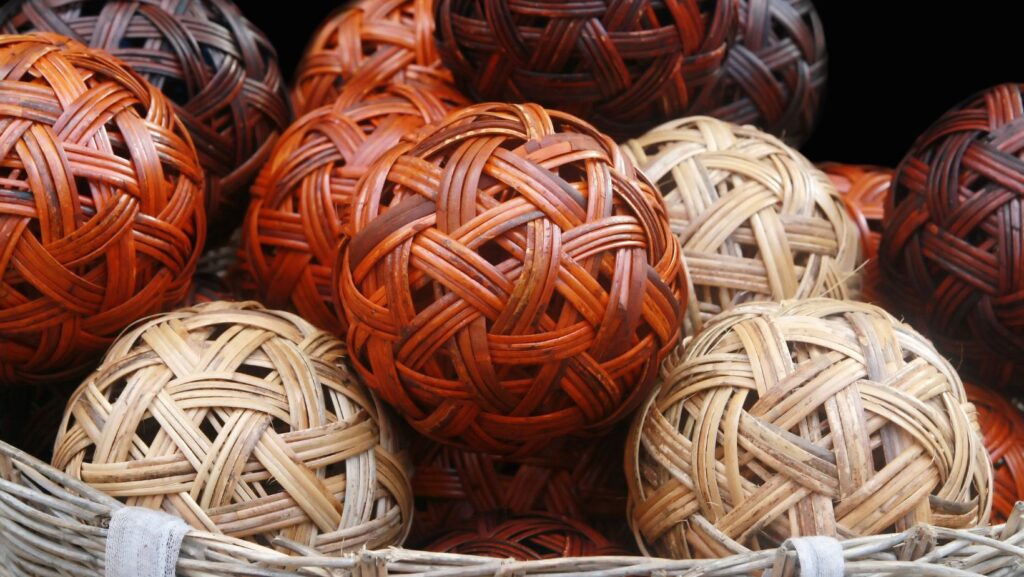The Sepak Takraw ball, a key element in the dynamic sport of Sepak Takraw, stands out for its unique characteristics and construction. Originating from Southeast Asia, this sport combines elements of soccer, volleyball, and badminton, requiring players to use everything but their hands to touch the ball over the net. The ball itself is traditionally made from woven rattan or synthetic fibers designed to be lightweight yet durable enough to withstand intense kicks and hits.
Sepak Takraw Ball

Diving into the world of Sepak Takraw, the ball stands out as a unique element that sets this sport apart from others. Crafted meticulously, it’s not just any ball but a woven sphere that embodies the essence and tradition of the game. Originating in Southeast Asia, this sport combines elements of soccer, volleyball, and badminton, played without using hands but instead relying on skills to control and pass the sepak takraw ball using feet, head, knees, and chest.
The traditional sepak takraw ball was once made from rattan or bamboo strips; however, advancements in technology have introduced synthetic materials offering durability and uniformity while preserving its lightweight and pliable characteristics.
Types of Sepak Takraw Balls
Traditional Rattan Balls
The sepak takraw ball, an integral part of the dynamic sport known as sepak takraw, has evolved through the years. Yet, it’s the traditional rattan balls that still capture the essence and origins of this game. Crafted from natural rattan, these balls are not just a testament to the sport’s rich history but also to the craftsmanship involved in their making.
Historically, making a sepak takraw ball from rattan was an art form passed down through generations. Skilled artisans would intricately weave the rattan strips to create a sphere that was both durable and flexible enough for play. The process required precision and patience, as each ball had to meet specific standards in size and weight.
Important Features to Consider When Buying
Size and Weight

The size and weight of a sepak takraw ball play pivotal roles in how the game unfolds. Typically, these balls have a standard circumference ranging from 41 to 43 centimeters and weigh about 170 to 180 grams. It’s this specific sizing that ensures the ball can be kicked effectively while maintaining control during high-flying maneuvers.
- Standard Circumference: 41-43 cm
- Weight Range: 170-180 grams
This precise balance between size and weight allows players to execute powerful spikes and intricate passes that define the dynamic nature of sepak takraw. Choosing a ball outside these parameters could significantly impact gameplay, making it harder for players to predict its trajectory or control their kicks with finesse.
How to Maintain Your Sepak Takraw Ball
Store Properly

Storing your sepak takraw ball correctly is crucial. Avoid leaving it exposed to direct sunlight or in extremely wet or dry conditions. Excessive exposure to these elements can damage the ball’s material, affecting its durability and playability.
- Keep it in a cool, dry place.
- Avoid storing it with heavy items on top, as this could deform its shape.
Regular Inspection
Regular checks are vital to spot any signs of wear or damage early. This way, you can take necessary actions before these issues affect the game.
- Look for cracks, splits, or any deformation.
- Check if the weave remains tight and intact; loose strands can lead to further damage if not addressed promptly.
Cleaning Guidelines
Keeping your sepak takraw ball clean is not just about aesthetics; it’s about preserving its quality. However, harsh chemicals or abrasive materials should be avoided as they can harm the ball’s surface.
- Wipe down the ball with a soft, damp cloth after use.
- For tougher stains, use mild soap diluted in water and gently clean the affected area.
Avoid soaking the ball as this could weaken its structure.
Handling With Care
How you handle and use your sepak takraw ball significantly impacts its lifespan.
- During play, ensure that it’s used on appropriate surfaces that won’t cause unnecessary abrasion.
- Avoid sitting or standing on the ball since excessive pressure can distort its shape and impair functionality.


